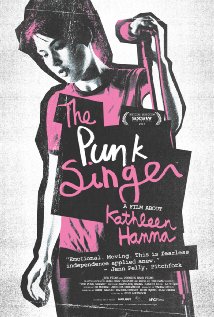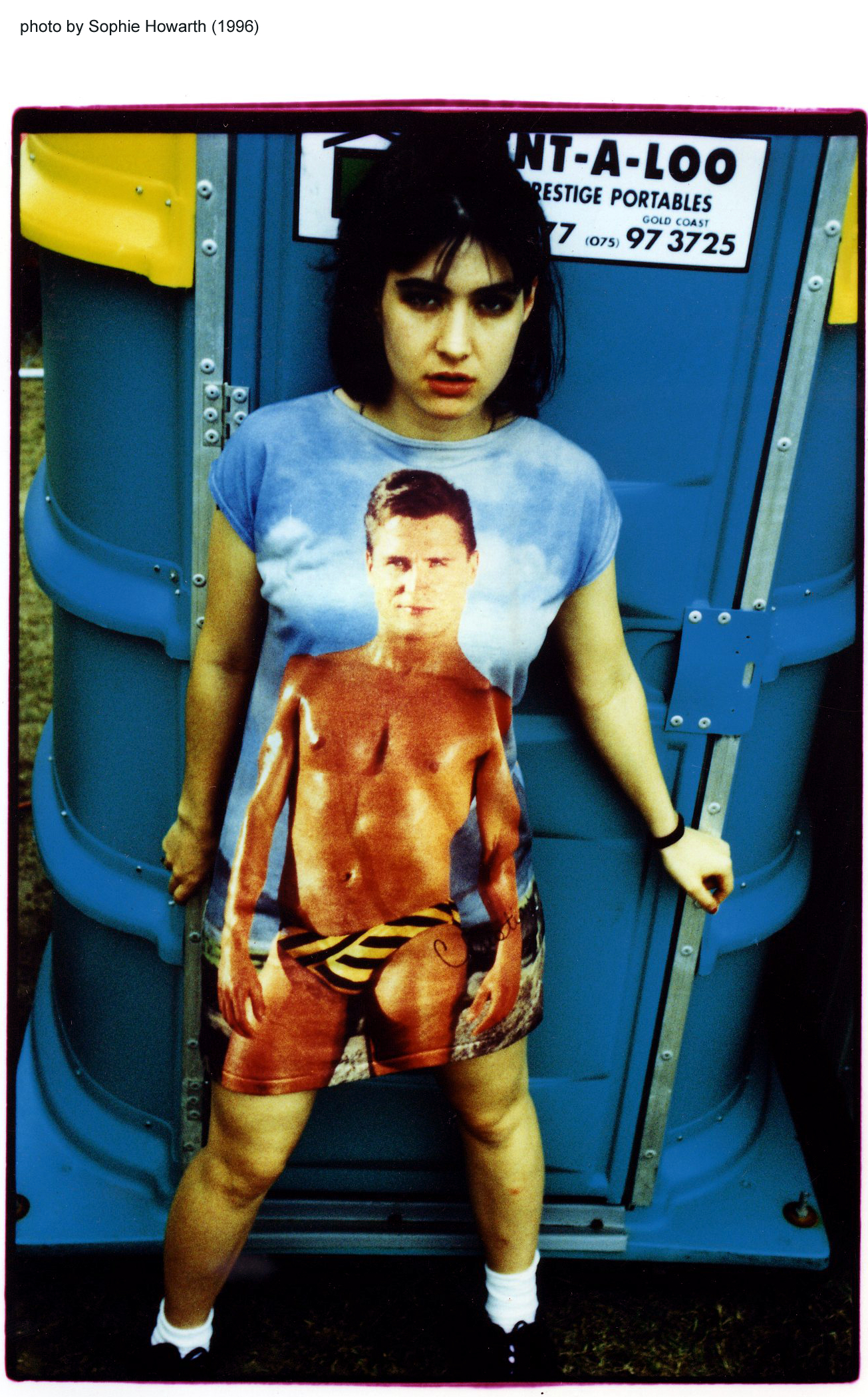 The Nick has always been good about keeping a nice selection of well-curated music documentaries rotating through their programming calendar, and The Punk Singer is no exception. The story of the riot grrl movement of the 1990s is one that still urgently needs to be told again and again, and the career of the explosive and charismatic Kathleen Hanna is a fitting, although not entirely unproblematic, vehicle in which to do that.
The Nick has always been good about keeping a nice selection of well-curated music documentaries rotating through their programming calendar, and The Punk Singer is no exception. The story of the riot grrl movement of the 1990s is one that still urgently needs to be told again and again, and the career of the explosive and charismatic Kathleen Hanna is a fitting, although not entirely unproblematic, vehicle in which to do that.
The film does an excellent job of distilling not only the essential details of the movement, but also the spirit and sense of excitement that surrounded its emergence as a powerful punk subculture. Rooted in the home bases of the Pacific Northwest and DC area, a collection of female musicians formed bands that explicitly addressed issue of patriarchy, sexual abuse, and rape and sought to empower other women to make music, write zines, and becomes activists. An explicitly revolutionary movement, riot grrls held meetings and organized protests and concerts in the hopes of forging a new kind of third-wave feminism.
In focusing specifically on Kathleen Hanna, documentarian Sini Anderson somewhat oversells how central the Bikini Kill leader was to the creation of the movement at the expense of her many collaborators and kindred spirits, but the film definitely captures what made the singer so essential to the whole thing. Through footage of just a handful of live concerts interspersed and supported by Bikini Kill studio recordings, Hanna’s undeniable stage and vocal presence, as well as her ability to meld punk and DIY ethos with feminism with a commanding poise makes it clear just how electrifying, and impossible to ignore, Bikini Kill was. The first half of the film essentially tries to recreate the atmosphere and sense of empowerment that the riot grrrl movement inspired as it intersperses archival footage of Hanna doing interviews and Bikini Kill performances with interviews on Hanna's influence with, among others, Joan Jett, Kim Gordon (Body/Head, Sonic Youth), and Corin Tucker and Carrie Brownstein (Sleater-Kinney).
The second half of the film moves quickly through Bikini Kill’s breakup, Hanna’s romance with eventual husband Adam Horowitz (Beastie Boys), her move to more electronic, and somewhat more accessible, sonic terrain in Le Tigre, and that band's extended hiatus around 2006 due to Hanna’s mysterious illness, which dominates the final section of the documentary. The fast pace yields mixed returns, as at times it feels like Anderson is ably filling in the gaps of Hanna’s life, and at other times like she’s pushing too fast through the last 15 years or so of her story to reach the end. Having said that, the film’s punchy 80 minute run time is definitely one of its strengths, and it provides ample time for Hanna to shed light on both her condition and the general plight of those with late-stage Lyme disease, which is notoriously difficult to diagnose. Hanna even makes a nice connection between the kind of hurdles lyme disease sufferers face (and, by extension, other people suffering from disabilities) to the ones that feminism more traditionally tackles.
The film ends with Hanna’s triumphant return to music, as 2013’s Run Fast, a full-length album recorded by her resurrected moniker/band The Julie Ruin, can attest. It splits the difference a bit between the electroclash of Le Tigre and the shoutalong punk of Bikini Kill, and is a surprisingly sharp return to form for Hanna given her years away from music-making and songwriting.
Some of the more problematic elements of the film were pointed out by the Girls Rock Columbia organized panel that followed Monday night’s screening. The panel featured five volunteers from last year’s camp, Jennifer “Bingo” Gunter, Meeghan Kane, Katherine McCollough, Ony Ratsimbaharison, and Mollie Williamson, many of whom noted the movement’s white middle-class exclusivity and some of the difficulties of translating the riot grrrl movement across divides of race, class, and nationality even as they praised the profound impact and importance of Hanna. This essay by music journalist Laina Dawes entitled “Why I Was Never a Riot Grrrl” became a valuable touching point for the discussion and should be required reading whether you see the film or not.
On a personal note, as a white male music writer who has written explicitly about the gender of some of the members of the panel in the past, the discussion of how female musicians are portrayed in the press and constantly asked to interrogate the relationship between their gender and their art provided an uncomfortable yet necessary reminder of both my own extraordinary privilege and the ways in which even the best of intentions can often bare traces of the very structural inequalities that feminism seeks to subvert.
The film screens once more at The Nickelodeon on Friday, January 31st, at 11pm.
Bonus Feature from Last Night’s Screening: A short set by members of Hauswerk and Those Lavender Whales (Jessica Bornick – drums, Ony Ratsimbaharison – guitar, and Katherine McCollough – vocals) before the film that ripped through two Bikini Kill songs and two Hauswerk originals that fit the spirit of the evening to a T.
-Kyle Petersen
Trailer:
[youtube=http://www.youtube.com/watch?v=fwrXC5OXqgc]


